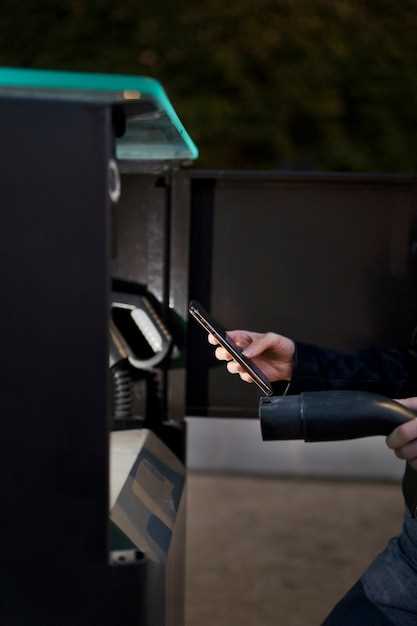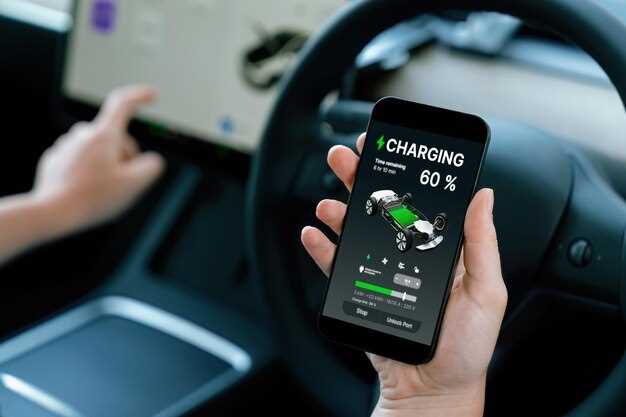
Wireless charging has become increasingly popular in modern vehicles, particularly in Ford models, as it offers convenience and a seamless experience for drivers and passengers alike. By utilizing advanced electromagnetic induction technology, wireless charging allows users to power their devices without the hassle of tangled cords or connectors. This innovative feature not only enhances the functionality of Ford vehicles but also aligns with the growing trend of smart, technology-driven transportation.
At the core of wireless charging systems is a transmitter located in the vehicle, typically embedded in the center console. This transmitter generates an electromagnetic field when it is activated. When a compatible device, such as a smartphone or a wearable, is placed on the designated charging pad, a receiver coil within the device captures the energy from the electromagnetic field. The energy is then converted into electrical current to recharge the device’s battery.
Ford vehicles equipped with wireless charging capabilities often support multiple devices simultaneously, ensuring that everyone onboard can stay connected and powered throughout their journey. Understanding how this technology works not only highlights Ford’s commitment to innovation but also illustrates the practical benefits that enhance user experience in the realm of modern automotive design.
Understanding the Technology Behind Wireless Charging in Ford Cars

Wireless charging technology in Ford vehicles utilizes a method known as electromagnetic induction. This approach allows for the transfer of energy from a charging pad to the vehicle’s battery without the need for physical connectors. Below are the key components and processes involved:
- Inductive Charging Pads: Ford vehicles are equipped with an inductive charging pad located in the center console or other designated areas. This pad generates an electromagnetic field.
- Receiver Coil: Inside the vehicle, a receiver coil is positioned to align with the inductive charging pad. When the vehicle is placed on the pad, this coil captures the energy transferred through the electromagnetic field.
- Energy Conversion: The captured energy is then converted from alternating current (AC) to direct current (DC) by an onboard power management system. This process ensures that the energy is suitable for charging the vehicle’s battery.
- Battery Management System: Ford’s advanced battery management system monitors the charging process, ensuring efficiency and safety. It regulates the charging rate based on the battery’s state of charge.
- Alignment Technology: Some Ford models may include alignment technology to assist drivers in positioning the vehicle accurately over the charging pad for optimal efficiency.
This wireless charging system emphasizes convenience, allowing drivers to charge their devices simply by placing them on the pad without the hassle of cables. Additionally, the robustness of the electromagnetic induction process ensures that the charging mechanism is safe, reliable, and efficient.
As wireless technology continues to evolve, future Ford vehicles may integrate even more sophisticated systems, enhancing the user experience while supporting the growing demand for wireless charging options.
Compatibility Between Ford Wireless Chargers and Smartphones
Ford wireless chargers are designed to support a wide range of smartphones equipped with Qi wireless charging technology. This compatibility allows users to conveniently charge their devices without the need for traditional cables. Most modern smartphones, including popular models from brands such as Apple and Samsung, feature built-in Qi charging capabilities, making them suitable for use with Ford’s wireless charging pads.
However, it is essential to ensure that your smartphone is compatible with the specific Ford model you own, as charging performance can vary based on the vehicle’s design and the placement of the charging pad. Factors such as the smartphone’s size, case thickness, and alignment with the charging area can affect the charging efficiency. For optimal results, it is recommended to remove any thick cases or metallic accessories from the smartphone, which may interfere with the charging process.
Ford vehicles typically include guidelines or hints within the user manual about which smartphones have been tested for compatibility with its wireless charging systems. Keeping firmware and software updated on both the vehicle and smartphone can also enhance the compatibility experience, ensuring reliable performance each time you utilize the wireless charging feature.
Overall, while an extensive range of smartphones work seamlessly with Ford’s wireless charging technology, manufacturers and users should stay informed about compatibility requirements to maximize efficiency and convenience.
Troubleshooting Common Issues with Ford’s Wireless Charging System

Wireless charging in Ford vehicles provides a convenient way to power your smartphone without the hassle of cables. However, users may encounter some issues from time to time. Here are some common problems and their solutions.
One frequent issue is that the smartphone does not charge when placed on the charging pad. First, ensure that the smartphone is compatible with the vehicle’s wireless charging system. Check for any obstructions like cases or accessories that may interfere with charging. It’s advisable to remove thick cases, metal attachments, or magnetic mounts that could obstruct the charging process.
Another common problem is intermittent charging or a complete lack of charging. This can sometimes be resolved by cleaning the charging pad and the bottom of the smartphone. Dust and debris can block the connection, so a simple wipe with a soft cloth can improve performance. Additionally, make sure the vehicle is running or in accessory mode, as some models may not charge while turned off.
If your smartphone heats up during the charging process, it could indicate an issue with the alignment on the pad. Adjust the smartphone’s position to ensure optimal contact with the charging surface. If the overheating persists, consider using a different charging pad or consult your vehicle’s manual for specific guidelines.
Finally, ensure that the vehicle’s software is up to date. Ford periodically releases software updates that can improve the performance of the wireless charging system. Check with your local dealer or the Ford website for any available updates that pertain to your vehicle model.



